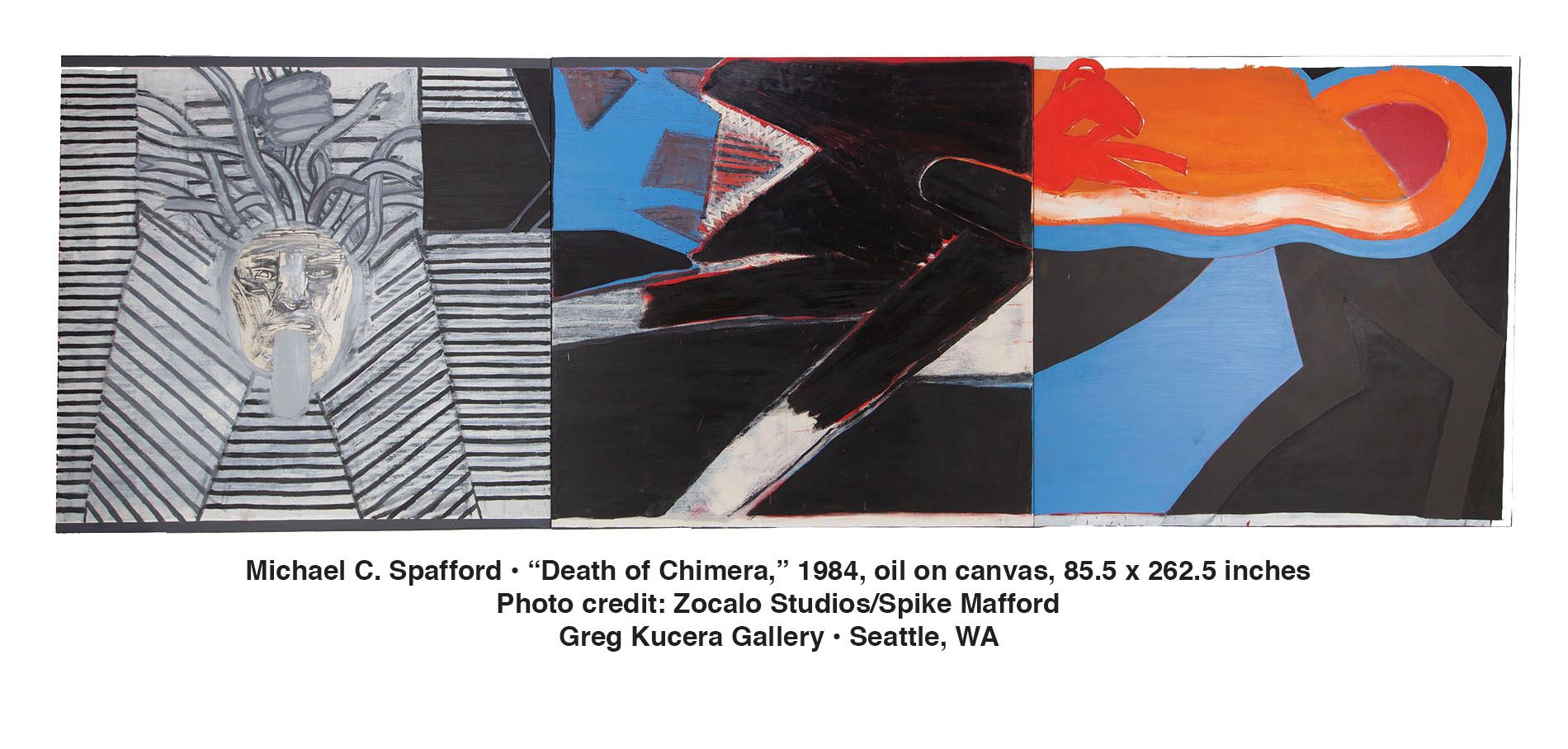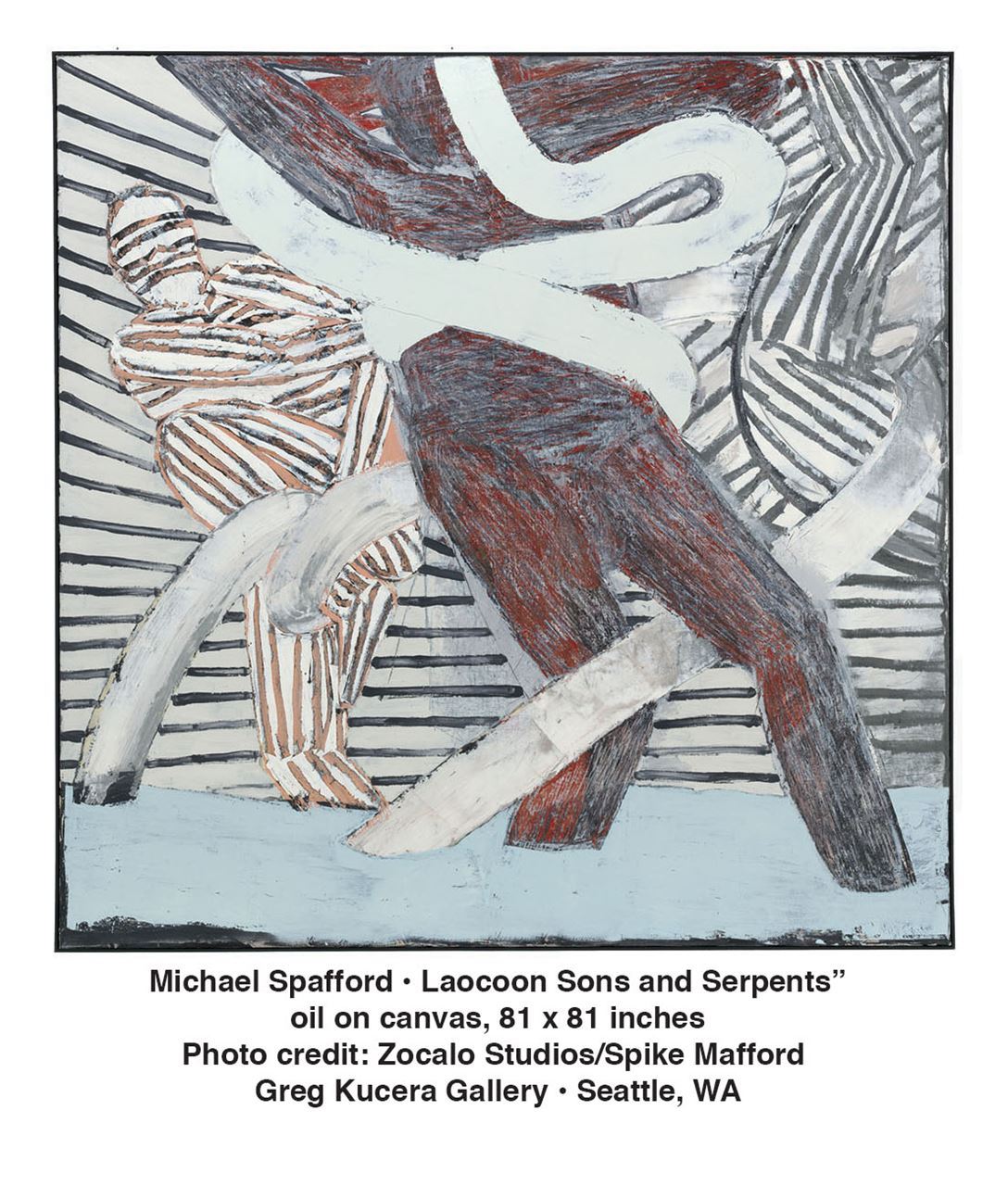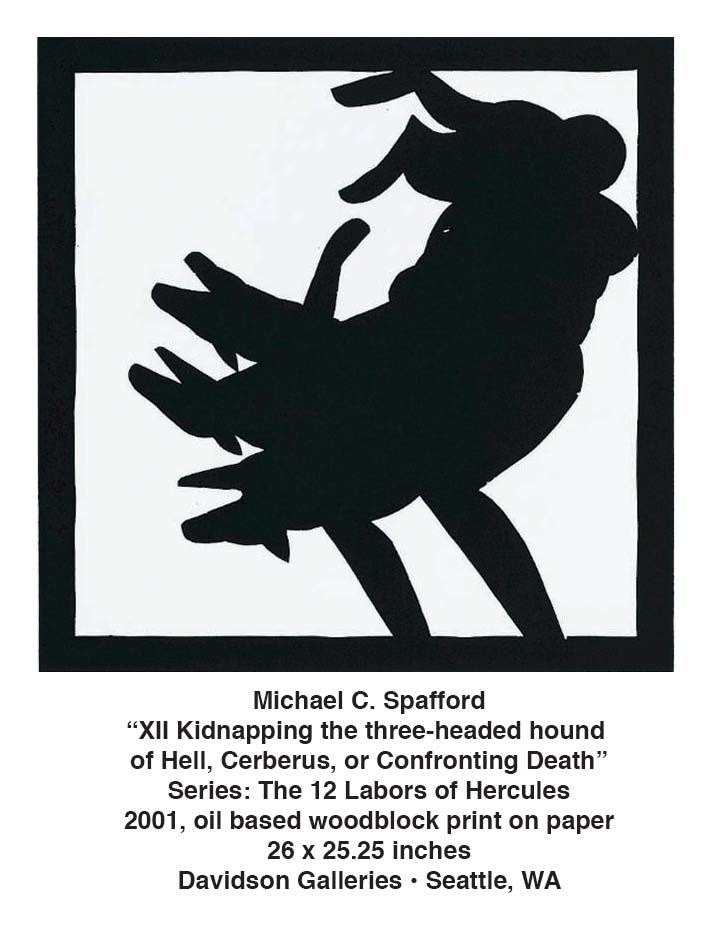
The Man & The Myth: The Epic Works of Michael C. Spafford
 What does it mean to separate a artist from his work? Is it truly possible to view art in a vacuum, separate from any outside historical context or influence? Are the stories behind the art separate from the stories within it?
What does it mean to separate a artist from his work? Is it truly possible to view art in a vacuum, separate from any outside historical context or influence? Are the stories behind the art separate from the stories within it?
These are all questions that were percolating as I went to witness the colossal collection of Michael Spafford’s work that is currently on display at Greg Kucera, Woodside/Braseth, and Davidson Galleries. While I arrived full of questions, I left with a profound respect for both the depth of Spafford’s work and the ideas he is trying to unravel within it.
At its heart, Spafford’s work is about storytelling. Not his own stories per say, but rather the retelling and depicting of ancient myths. He interprets the tales in a variety of mediums, each more nuanced than the one before. In oils, he is bold and sometimes even primal in his expressions. If you look closely at the paintings, you can occasionally find where his fingertips traced the tales into the canvas. In watercolor, he is more subtle, but by no means subdued, carrying ancient archetypes and his strong linear forms across each expression. The collection goes on to include works in charcoal, collage, and sketches to form an immense array spanning nearly six decades that proves that Spafford is impactful in any medium.
The work is as intense as it is expansive. While some collections of this scale might contain only a few pieces that truly captivate, each piece of Spafford’s does its part to draw you in. This is not to say that all of the pieces are all particularly inviting. Many of the canvases come off as eerie, while others feel more bold and visceral, largely in part to the artist’s affinity for the color red. They are all however, consuming in some capacity, bringing each story they contain to life in a variety of renditions and sizes. In fact, it is Spafford’s unique use of both canvas and scale, and the way in which some works are cut, peeled away from the surface, or designed in obtuse shapes and pieced together, that makes the work feel as if you could climb inside and suddenly find yourself within the artist’s mythical world.
Some of the pieces are striking simply because of their size, while others are because of subject they contain. All of the work shares a common thread in the depiction of Greek myths, many of which containing characters both human and animal. Half man, half bird, Icarus takes a spiraled flight. In bold blues, red, and black, the chimera meets its fateful end. Men battling serpents, Leda laying with the swan, Europa and the bull, the mighty minotaur waiting in the maze...so many of these pieces trace the lines and connections between man and beast. Looking at them, one starts to wonder, what is it that brings Spafford back to these stories time and again. On the surface, mythology appears to be the common thread, and yet, I found myself questioning: Where does Spafford see himself in these stories and struggles?

As I continued through the collection, I came to realize it isn’t just the artist that sees himself in these stories. In a way, mythology is one of our oldest forms of expressions, and by nature, stories like these are means to which we better understand ourselves and our common connections. These stories in particular explore the idea of both our humanity and our animality, and how intertwined the two truly are. We like to see ourselves as a species far evolved. And yet in modern day, looking at the bloodshed and beasts in Spafford’s work, you realize that our kind is only slightly less impaired by impulse and instinct than the creatures depicted in these stories from long ago. Reflecting on these tales of man and animals, make one start to question how distinct and divine we truly are from our fellow animal forms.
While some may see the content of Spafford’s work as no more than depictions of tales from a far off ancient time, I think the artist is calling us to question something that lives beneath the surface of these stories. He is calling us to see the connection between past and present, between reality and recreation. He is wanting us to consider the thread that binds us to our most visceral self, and in turn these stories from the past. It is this questioning that makes this work continue to have a profound and primal way of pulling one in during the present day. Perhaps that is why Spafford and his paints return to these tales again and again, ever blurring and building the connections between the man and the myths that came before.
Madeline Reeves
Madeline Reeves is a Pacific Northwest writer and consultant. For more information about her and her work, visit www.fearlessintraining.com.
Davidson Galleries
313 Occidental Avenue South
Seattle, Washington
Greg Kucera Gallery
212 Third Avenue South
Seattle, Washington
Woodside/Braseth Gallery
1201 Western Avenue
Seattle Washington